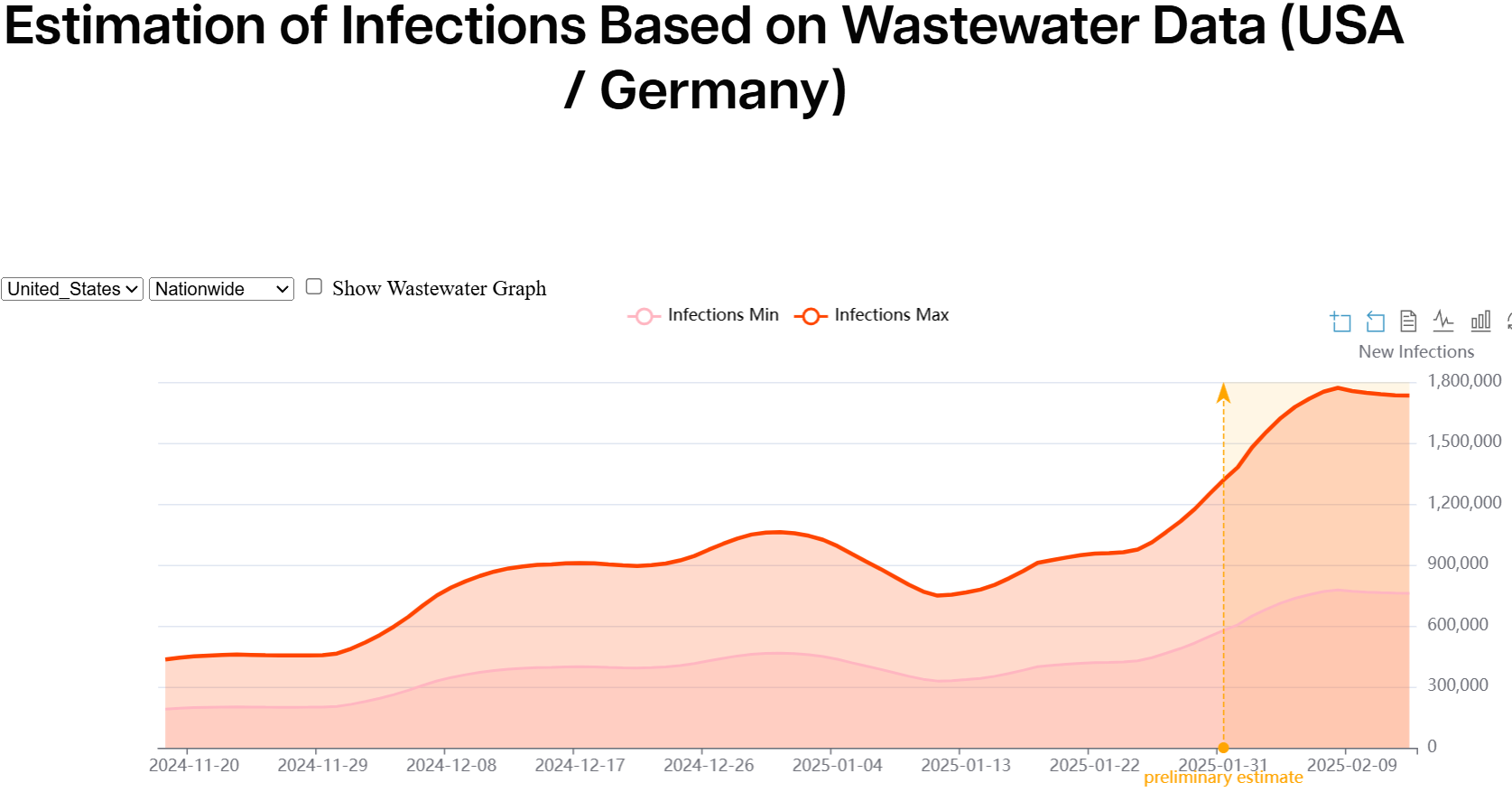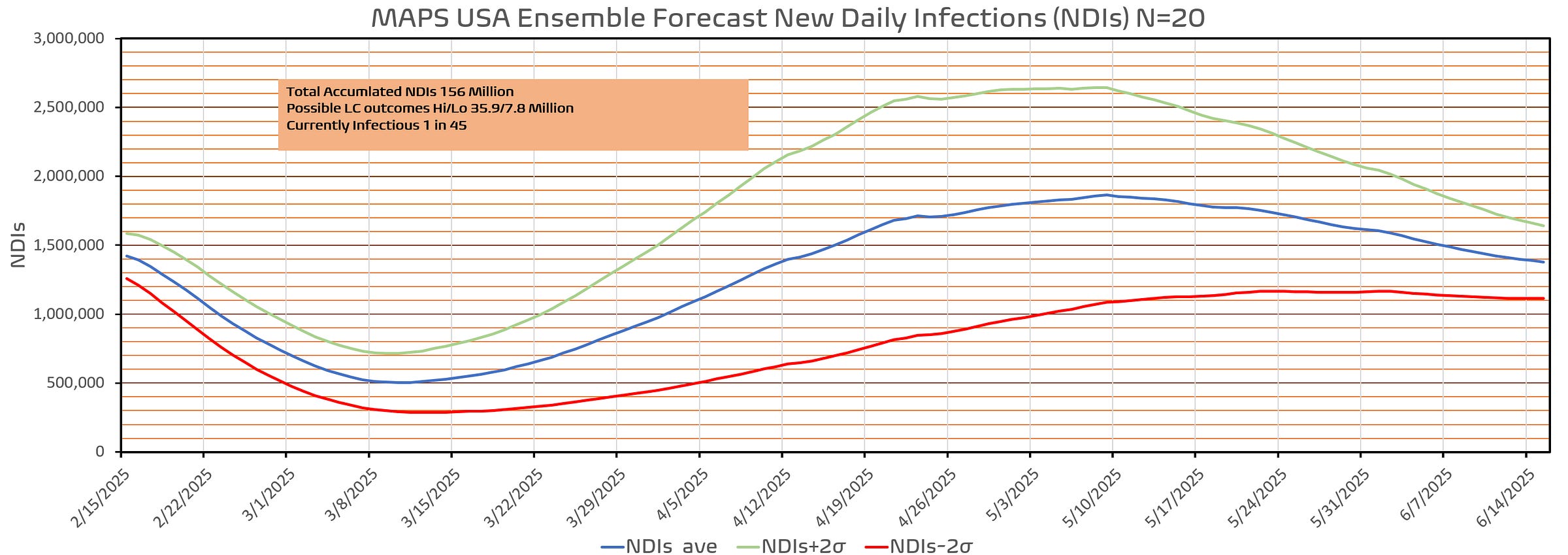Squeak, squeak, squeak … “Quick, call the EMS (Emergency Mice Services); Mickey is down!” Read more in And now for something completely different …

This will be a brief forecast edition. Substack will be coming fast and furious over the next several days. First up will be a Long Covid Awareness edition, guest written by my dear friend, Becky Robertson, and cohost of the LC Insomniacs Space on X, (I know, it is tough being on Twitter these days, but it is the only place we can effectively do a space every night at 11 PM CT). This will be an impassioned section by Becky laying out why this is so important for many of us in the struggle to raise Long Covid Awareness. There will be a plethora of links with activities, merchandise, and things you can do to help the cause. You can hear Becky’s story here. In the meantime, here is a link that you can use to frame your profile pictures on social media. It may seem small, but I assure you it means a hell of a lot to those of us in the community.
Here are my new Facebook and X profile pictures.
Next up will be a weekend forecast with the latest CDC variants proportions analysis with some new goodies for you.
MAPS
Last week, I mentioned adding Influenza to the list of modeled pathogens. I am still tinkering with the algorithm for initialization and hope to include that and measles in the next substack. Back when it was consistently updated, the lag was roughly 10 days. So, as of now, MAPS can simulate SARS-CoV-2 and its variants, measles, influenza, and a hypothetical human-to-human H5N1. The good news is that the NWSS data continues to catch up but is still lagging by 18 days. Back when it was consistently updated, the lag was roughly 10 days. The last date that our WHN data meets our quality control is February 7, extending to February 20 for preliminary estimates. I also included the analysis from the last substack so that you can see the peak and timing of the peak continually changing as new data comes in for the analysis.
The present forecast extends from January 15 through June 15. The variants used in the forecast are from the CDC variant proportions analysis from February 2-15 and are shown in the table below the current wastewater data graph of NDIs. We will get a new analysis this Friday, and I will make another forecast over the weekend, including the measles and influenza.
From the last edition, “The table of wastewater variant proportions indicates the continued decline in XEC dominance and the rise of LP.8.1, which I will surmise is currently the most predominant variant as of this writing. I want to point out that 4 out of the top 10 variants are recombinants. Back in August, I pointed out that the next phase of dominant variants after the run of the JN.1 variants would be recombinants. Whether this persists is of considerable interest but does fit the pattern of the emergence of recombinants (XBB*) after the BA.2 variants dominated for nearly a year.”
Here is the output of the latest forecast. It appears we will be on an increase beginning Match 10 after experiencing a minimum of roughly 500,000 NDIs. The peak of the average is May 10th, at nearly 1.9 million NDIs, with a slow tail-off following the next 35 days. According to MAPS, roughly one in 46 people has active infections.
The last forecast is shown below. The predictions are strikingly similar. Notable differences are in the minimum being 200,000 higher in the forecast and a peak moving up nearly 13 days with a higher magnitude of nearly 200,000 NDIs higher in the new forecast. The combined effect of this is roughly 31 million more accumulated NDIs and a subsequent increase in the potential Long Covid outcomes. I expect that the forecast of the peak is likely more accurate as the forecast horizon from start to peak is shortened.
Again, we see a recurring result happening in these forecasts. Nearly every forecast I have produced over more than a year has indicated that at least one-third of the population is infected, whether it be a new or multiple infections during this period. Folks, as I tirelessly have pointed out, this is not sustainable for our health or economic interests.
I am now pleased to present you with a new product. You can go to the link below and download a spreadsheet that has the MAPS forecast for every state in the lower 48. You can plot your own state, play around with regional analysis, or do whatever you please with the data. Here are all 48 states plotted at once. Confusing, huh? That is why I will provide this data for your personal use while we (the WHN) work on an interface for our website that will allow you to not only look at each state individually but allow you to draw a bounding box on a USA (and eventually Canada) map to zoom in on your location and look at a graph or animation. I hope you enjoy this; you can find the data here.
And now for something completely different …
I have observed a behavior in all my companions (golden retrievers and labs) over my lifetime. When I get an injury of some kind, and I am distressed, they will be right there licking my face. I am so lucky to have/had such good, empathic friends at my side most of my life. Well, it turns out mice exhibit a similar behavior, and I suspect it is prevalent across the animal kingdom. This is an interesting study. Enjoy.
This is a summary article on the study.
University of California, Los Angeles, researchers have identified neural mechanisms behind prosocial behaviors in mice directed toward unresponsive conspecifics. Their findings suggest that mice, driven by an amygdala-regulated response, preferentially approach and engage in head-directed grooming toward sedated peers, which facilitates their recovery from unresponsiveness.
Partial or complete loss of responsiveness, such as transient unconsciousness, increases vulnerability in animals. While humans readily recognize and assist unconscious individuals, previous documentation of similar behaviors in nonhuman species has been anecdotal and limited to a few taxa, including nonhuman primates and marine mammals.
Controlled experimental examination of such behaviors in other species and their underlying neural mechanisms has been lacking.
In the study, "A neural basis for prosocial behavior toward unresponsive individuals," published in Science, researchers used male and female mice to assess responses to conspecifics under unresponsive sedation induced by dexmedetomidine.
Behavioral assays revealed that mice spent more time engaging in intense physical contact and grooming, particularly targeting the facial and mouth areas of sedated peers, compared with awake partners. Grooming intensity increased over time during the sessions and was not influenced by the sex of either the helper or the recipient.
Three-chamber preference tests demonstrated that mice favored interacting with unresponsive conspecifics over awake ones, and this preference was not driven by novelty or stationary object attraction.
Mice detected the unresponsive state of conspecifics without relying on visual cues. Behavioral responses, including head-directed grooming, remained consistent when experiments were conducted in complete darkness, indicating that other sensory modalities, such as auditory, olfactory or somatosensory cues, likely mediated this detection.
Mice also distinguished between sedated and stressed partners, displaying head-focused grooming toward sedated individuals and body-focused grooming toward stressed ones.
Neural activity recordings via microendoscopic calcium imaging and optogenetic manipulations pinpointed the MeA as a critical neural substrate.
MeA neurons differentiated between awake and sedated partners at both single-cell and population levels. Optogenetic silencing of MeA GABAergic neurons suppressed head-directed grooming while activation promoted it.
Intense head grooming correlated with increased motor responses in sedated recipients, including tail twitching and expedited recovery from the unresponsive state. Understanding how mice detect and respond to specific adverse states of others offers insights into neural circuits underlying more general prosocial animal behaviors.
You probably never thought this could be so complex. :-D
The next substack will be in a couple of days, followed by the weekend forecast edition with more content about H5N1, influenza, and measles.
In the meantime, stay safe, and do kind acts for others and, most of all, yourself. Thank you for reading.
Joe
Miscellaneous items you might like follow below.
Here is a kick-ass at-home test, nearly equivalent to a PCR test.
SARS-CoV-2 is a vascular virus, not just a respiratory virus. To make it simpler for folks, call it a whole-body virus. No organ is spared. It infects our entire body and creates reservoirs throughout. It should be thought of as a Long COVID virus and will exploit pre-existing risk factors.
Check out this article. I love it. It’s an easy read but stimulates the brain in many ways.
Viruses Finally Reveal Their Complex Social Life - Quanta Magazine
Where do viruses hide in the human body? | The BMJ
Understanding immunity and viruses through the John Snow Project
Variant tracking at the CDC
Infections at WHN (updated!)
The neuroinvasiveness, neurotropism, and neurovirulence of SARS-CoV-2: Trends in Neurosciences (cell.com)













Thank you so much for the study. LP.8.1 is getting a lot of press, HA! I had not seen this yet so I will give this a read this evening. It will be interesting to see where LP.8.1* and XEC.4 are sitting tomorrow when the variant proportions are updated.
Again, thank you for you input.
Joe
Thank you for the frame! Let me look into this link. I know others have successfully grabbed it. I will let you know.